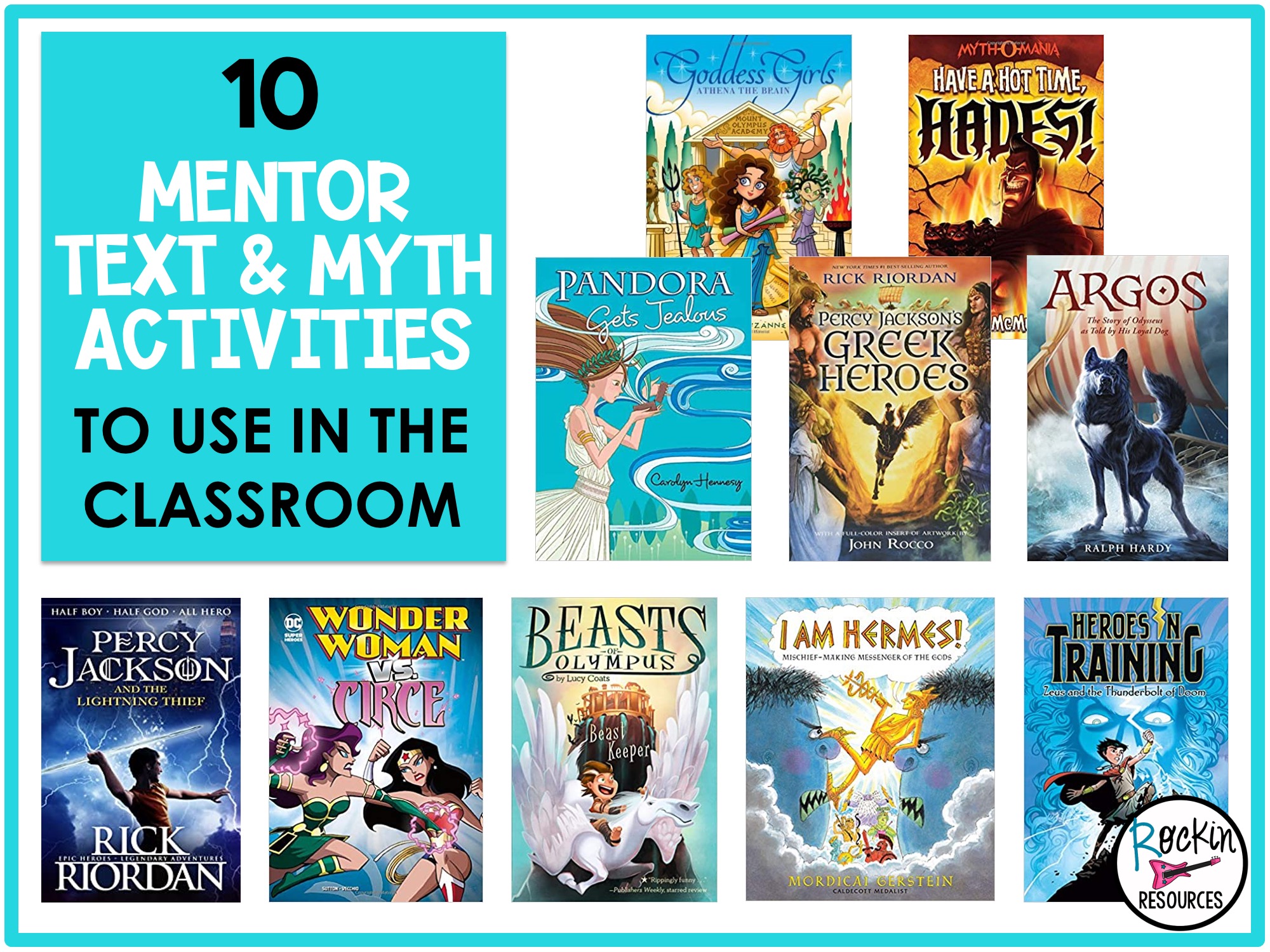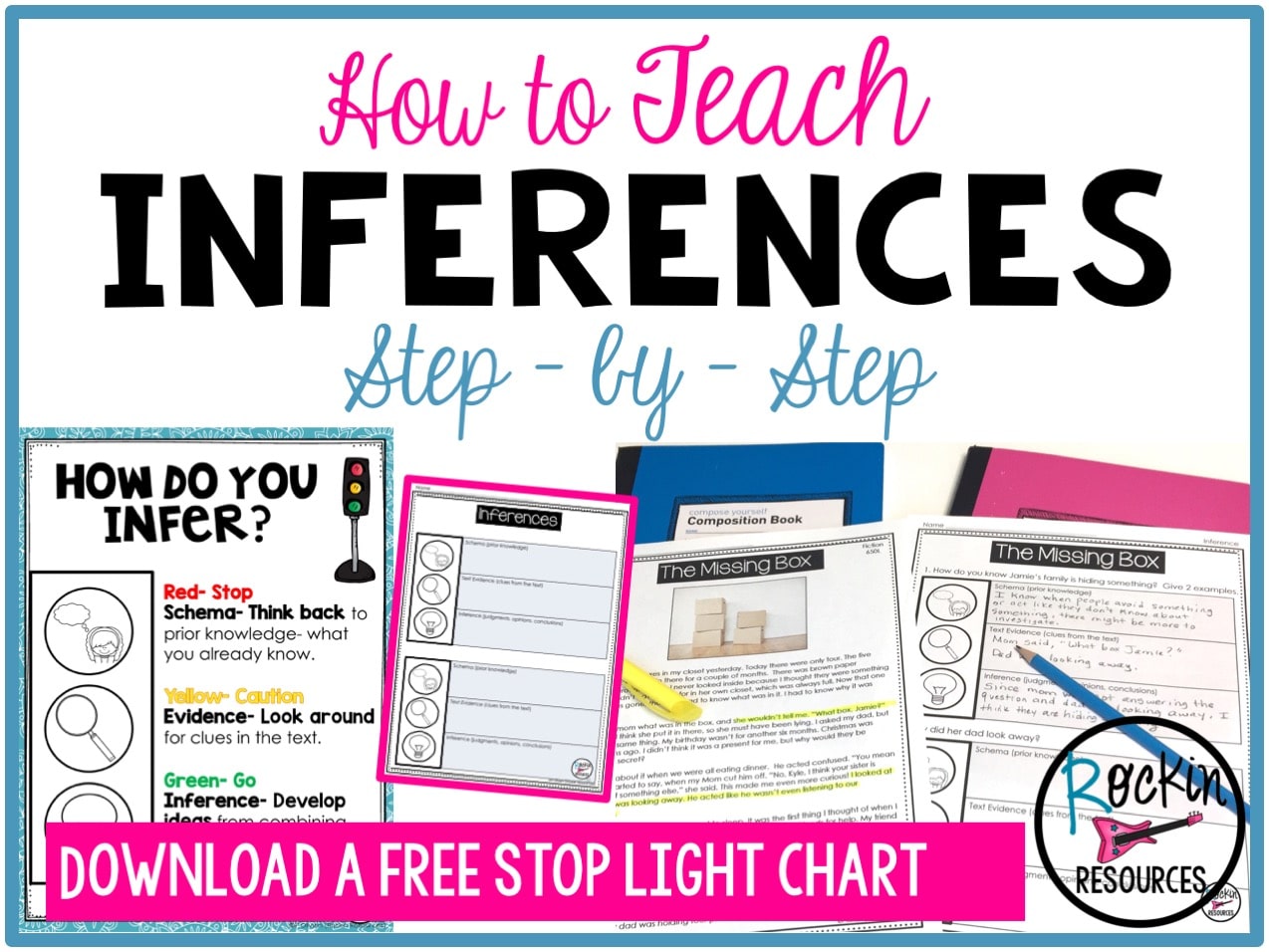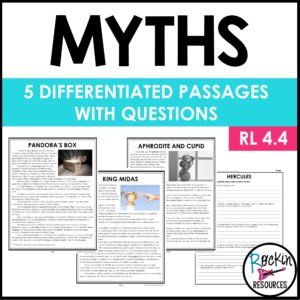Do your standards cover mythological allusions? If so, this is the right place for you! I will show you the steps to take to help you and your students develop a deep understanding of the Common Core Standard RL.4.4. It states: Determine the meaning of words and phrases as they are used in a text, including those that allude to significant characters found in Mythology (e.g., Herculean). Read on for an effective step-by-step approach to teaching mythology allusions!
The following lessons build upon each other to help students understand myths and allusions.
1. HANDS-ON ACTIVITIES
TELEPHONE GAME: Introduce the unit by playing the telephone game. How to play the telephone game- The first person in the circle whispers a word or phrase into the ear of the person sitting or standing to their right. The game continues as players whisper the word or phrase to the next person until it reaches the last person. The last person announces what he/she heard. More than likely, the word or phrase changed along the way. Discuss how it changed. Explain that this game is related to the meaning of myths. Myths began as traditional stories from our ancient history. Since there wasn’t technology back then to record the stories, they often got jumbled and exaggerated. That’s how myths are formed.

OTHER MYTHOLOGY BOARD OR CARD GAMES:
Greek Mythology Top Trumps Card Game: http://amzn.to/2q3XaLh
Zeus on the Loose: http://amzn.to/2q0BX5P
The Great Dalmuti: http://amzn.to/2q0Qvm3
2. MENTOR TEXT
Read a mentor text with your students to get them ready for the genre. Explain that a myth is a traditional story. It mostly includes the adventures of supernatural beings or stories of important events. It often attempts to explain a mysterious practice or a natural phenomenon.
Myth Passages with Questions by Rockin Resources: http://bit.ly/2sTd4v0
D’Aulaires’ Book of Greek Myths by Delacarte Books: http:/amzn.to/2pXQNKA
Treasury of Greek Mythology: Classic Stories of Gods, Goddesses, Heroes & Monsters by Donna Jo Napoli: http://amzn.to/2pYax0y
Child’s Introduction to Greek Mythology: The Stories of the Gods, Goddesses, Heroes, Monsters, and Other Mythical Creatures by Heather Alexander: http://amzn.to/2qykvc1
If you are looking for more Myth Mentor Text, Click HERE!
3. CONTEXT CLUES:
It is important to make sure the students know about context clues. It will help them better understand the concept of allusions. Context clues are clues that readers use to determine the meaning of an unknown word. How do you use context clues?
- Look at the word. Does it have a familiar prefix, suffix, or root word?
- Look at the sentence and sentences surrounding it. Do you see synonyms or antonyms that may help?
- Use your schema. Use prior knowledge and inference to determine the meaning of the word.

Context Clues Examples:
- An arid climate, like the desert, can make you thirsty. (Like the desert gives an example of arid.)
- The mild weather was nothing like last year’s harsh weather. (Harsh is an antonym of mild.)
4. ALLUSIONS:
An allusion is a figure of speech that makes a brief, indirect reference to a person, place, or event. It is often related to a past or current history, culture, literature, or politics. It does not include detail about the reference. It is often used in comparison through a metaphor or simile and references Greek or Roman Mythology or the Bible.
Allusion Examples:
- Don’t act like a Scrooge! (Literature- A Christmas Carol)
- She was a Good Samaritan when she helped the older man. (Bible)
- He studies all the time and is a regular Einstein! (Historical figure)
- Chocolate is my Achilles Heel! (Greek Mythology)
5. RESEARCH PROJECT
Have students research allusions in every day life. Ask them to identify the product or store, the allusion, and how the advertisement connects to mythology. For example:
- Trident Gum cleans and protects. The trident is the weapon of Poseidon or Neptune. It was used to protect.
- Ajax Cleaner is stronger than dirt. Ajax was portrayed as a courageous warrior and towering figure.
- Midas Brakes and Tires is a trusted auto service. They say, “Our word is as good as gold.” In mythology, Midas has a touch that turned things to gold.
6. ALLUSIONS IN MYTHOLOGY:
Then have a discussion about the allusions found in mythology. Go back to the mentor text list and read more myths and discuss the allusions.
Examples:
- Midas Touch– the ability to make money easily. King Midas turned everything to gold.
- Odyssey– a long journey. Odysseus made a long journey back from the Trojan War.
- Pandora’s Box– something that opens the door for trouble. Pandora opened a box of evils that plagued the world.
7. TAKE NOTES
Students should take notes to have a resource on hand as well as something as a reference for future lessons. Whether you are doing interactive notebooks, having students take notes, or copying the anchor chart to place in a notebook, it is important! Students will comprehend the lesson when repeating the information and taking notes. Here are examples of interactive notebooking:


8. PRACTICE
Provide students with an abundance of practice. Place simple task cards with context clues and allusions in centers. Provide passages with mythological allusions in them and practice finding the meaning to the allusions as a whole group, small group, and also independent work! Practice, Practice!
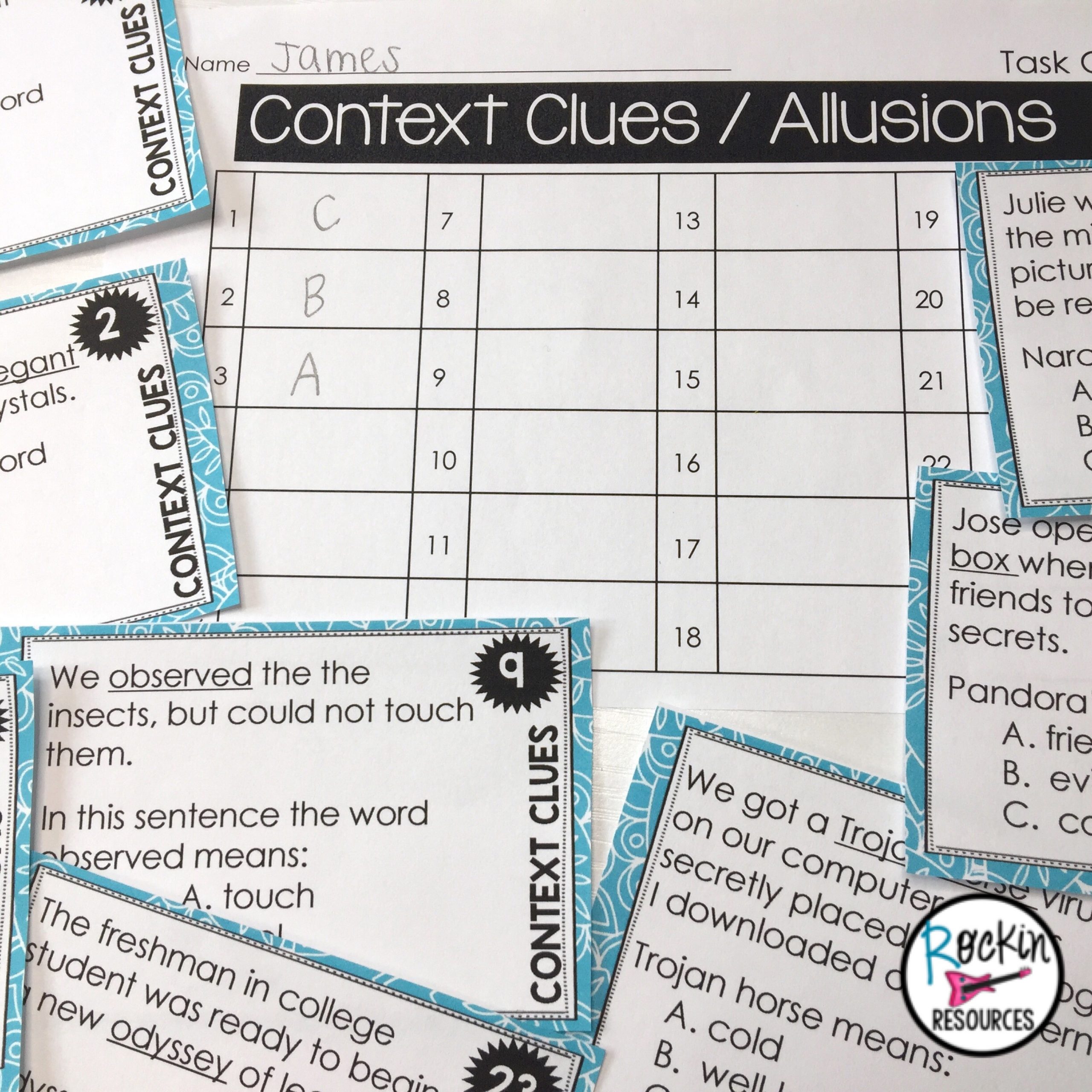
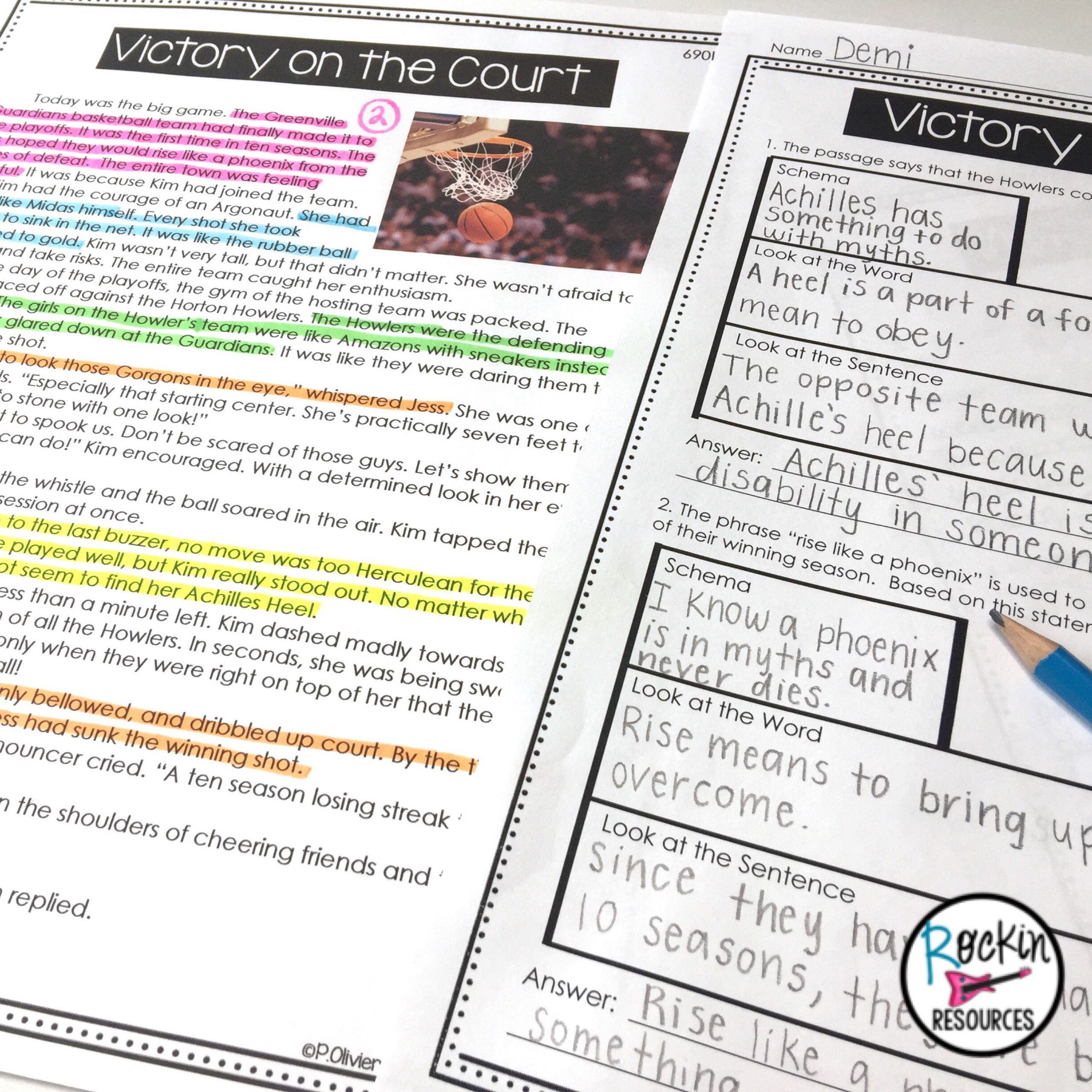
9. ASSESSMENT
First, make sure students had enough practice to assess their knowledge. Then provide them with a passage full of mythological allusions. Have students use context clues to determine the meaning of each allusion.
10. TRACKING
Record students’ assessment scores. Later gather a small group of students who may need more practice and record their scores from a second assessment.
I hope these ideas helped you find ways to help your students with mythological allusions!
If you would like a MYTHOLOGY UNIT already prepped and ready to use in your classroom tomorrow, click HERE or on the resource below!
Are you looking for a bundle of reading units? My step-by-step Reading bundle includes Inference, Text Evidence, Theme, Mythology, and Cause and Effect! Click HERE or below to learn more.
See Similar Blogs:
Since this skill involved inference and text evidence, these posts might be helpful as well!
Discover Related Resources:
-
Reading Skills Bundle for Reading Comprehension
Original price was: $14.97.$12.00Current price is: $12.00.




